Stainless Steel Vs Non-Stick Pans what do you think
jonny carney
4 years ago
last modified: 4 years ago
Featured Answer
Sort by:Oldest
Comments (33)
sheilajoyce_gw
4 years agolindac92
4 years agoRelated Discussions
High heat, stainless steel fry pan, brands, Demeyer copper etc.
Comments (2)The melting point of aluminum is 660 C; the melting point of copper is 1083 C. I doubt that you can heat a pan to either of those. Demeyere does indeed have frying pans, both nonstick and regular, that will stop heating at around 485 F. This feature only works on induction cooktops; it works because the magnetic material in the pans is designed so that it is only magnetic below that temperature. It would seem that they would work very well for the absent-minded cook. But, they are quite expensive, and do require induction. My current philosophy for nonstick frying pans is to go cheap so that I don't mind replacing them when they wear out. I currently like the Johnson Rose Crown Select (from Instawares and other retailers) line for this purpose. I have a 10" (I think) frying pan from them that has seem pretty heavy use for the last two years, and it is continuing to hold up pretty well. I'll probably need to replace it in another year or two. I like the Demeyere Atlantis line for other purposes. So far, I have had no problem with damage from overheating. There have been a couple incidents where things have burned on, and I have been amazed that the pan has cleaned up to pristine condition after a brief soak in soapy water....See MoreAll Clad non-stick vs. wok pan
Comments (9)I have both, plus LOTS of other AC SS. I rarely use their wok, as the old electric wok that my MIL bought me works ever so much better. I know, I know, the perfectionist/ foodies will say that you cannot do authentic wok cooking w/o a gas range (we have elect) and a carbon steel or cast iron wok. Ours is carbon steel, I belive. I just turn it on high, let it reach max temp. and it is great. I found that the AC SS wok did not really get hot up the sides like a real wok does, plus it is too small. Maybe it would on a gas range, but it does not on our smooth top electctric range. A plain old skillet works better. If you are looking to add to your AC collection, I highly recommend getting the non-stick skillet. I have the larger one -- the biggest one I could find -- it is absolutely a must for your kitchen to be complete - essential for cooking eggs, and helpful for some other things that stick, though I mostly use mine for eggs. We have had it for 3 years, use it daily and it goes in the dishwasher. No problems whatsoever w the finish inside and out. Still looks new. The other AC piece I use a lot is the saute pan - I also got the largest one I could find and it comes with a lid and besides the regular handle, has another thing to grip it on the opposite side. Mine is stainless - you don't want non-stick for a saute pan because things won't brown properly. Have fun w your gift certificate! Lynne...See MoreWhat do you think of a stainless steel tile backsplash?
Comments (6)I think that stainless backsplashes tend to work better with a transitional/contemporary/modern kitchens than ones that are described as "a lot more traditional". Having said that, the things you mentioned that you are using: shaker cabinet fronts, espresso stain, and light/white granite/quartzite read to me as more "transitional" than "traditional". And if that's the case, I think that the stainless backsplash will work fine....See MoreWhat do you use for non-stick frying pans?
Comments (47)We also got Emeril cookware for the induction top. I really like it...it has drain holes in the lids and the lids are clear so you can see how something is simmering or boiling without removing the lid. They are also reasonably quiet...some pots can be noisy on induction. Of course the best for induction is cast iron...either plain or enameled. Just make sure there aren't any burrs on the bottom of the pans or they may scratch the cooktop....See Morejohnc777
4 years agoannie1992
4 years agoIsaac
4 years agoLars
4 years agolast modified: 4 years agoCA Kate z9
4 years agoTHOR, Son of ODIN
4 years agoeam44
4 years agolast modified: 4 years agocarolb_w_fl_coastal_9b
4 years agolast modified: 4 years agojonny carney thanked carolb_w_fl_coastal_9bwekick
4 years agoJ Inhof
4 years agofoodonastump
4 years agolast modified: 4 years agoLadydi Zone 6A NW BC Canada
4 years agoGooster
4 years agoZalco/bring back Sophie!
4 years agolast modified: 4 years agoM
4 years agonancyofnc
4 years agoM
4 years agonancyofnc
4 years agowekick
4 years agoM
4 years agoBumblebeez SC Zone 7
4 years agofoodonastump
4 years agoM
4 years ago
Related Stories
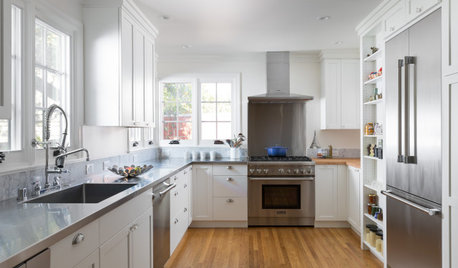
HOUSEKEEPINGHow to Clean Stainless Steel
Protect this popular kitchen material with a consistent but gentle cleaning routine
Full Story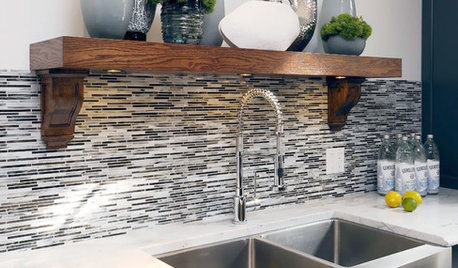
KITCHEN DESIGNKitchen Sinks: Stainless Steel Shines for Affordability and Strength
Look to a stainless steel sink for durability and sleek aesthetics at a budget-minded price
Full Story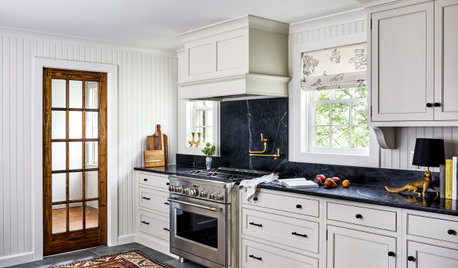
HOUSEKEEPINGHow to Keep Your Kitchen’s Stainless Steel Spotless
Consider these 6 cleaning tips for maintaining your stainless steel appliances and surfaces
Full Story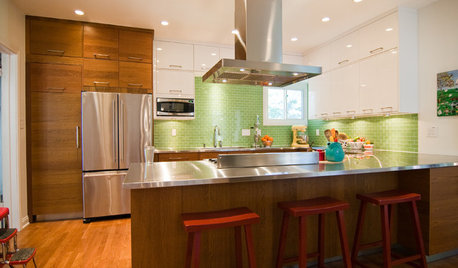
KITCHEN COUNTERTOPS10 Great Backsplashes to Pair With Stainless Steel Counters
Simplify your decision-making with these ideas for materials that work well with stainless steel counters
Full Story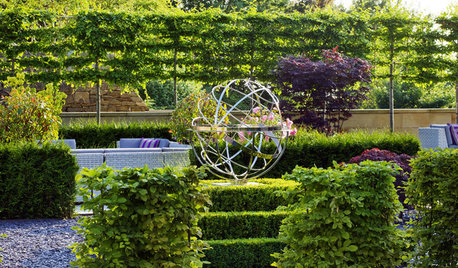
ARTBring on the Garden Bling With Artful Stainless Steel
Set stainless free of the kitchen, using it to brighten and decorate any garden in an unexpected way
Full Story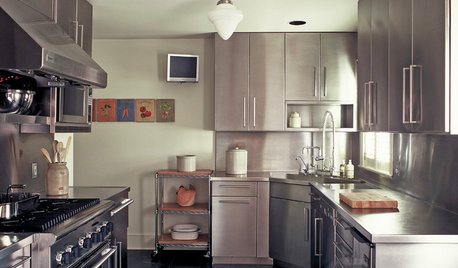
KITCHEN CABINETSA Hardworking Scullery Covered in Stainless Steel
This secondary kitchen in Maryland is a glossy, commercial-grade affair that’s easy to clean
Full Story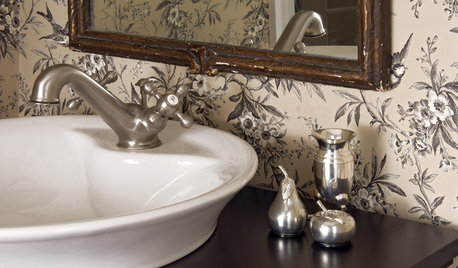
BATHROOM DESIGN10 Ways to Think Outside the Bathroom Sink Box
A Better Bathroom Sink: Go Stainless, Go Big, Go Sculptural
Full Story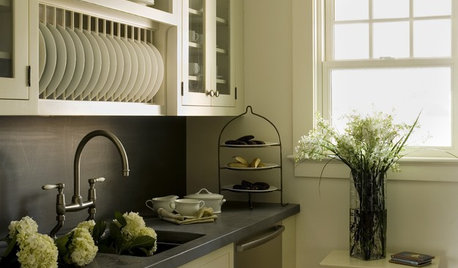
KITCHEN DESIGNThink Zinc for Kitchen Countertops
Adaptability is the hallmark of zinc for kitchen countertops, combining the durability of metal with the natural look of stone
Full Story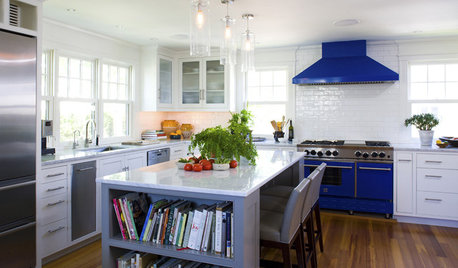
KITCHEN DESIGNSo Over Stainless in the Kitchen? 14 Reasons to Give In to Color
Colorful kitchen appliances are popular again, and now you've got more choices than ever. Which would you choose?
Full Story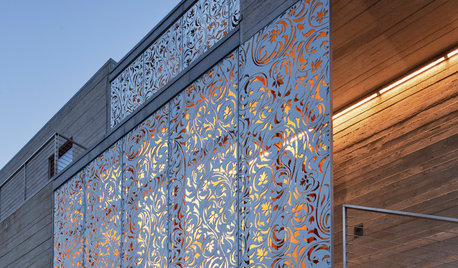
ARCHITECTUREDesign Workshop: Getting a Feel for Steel
Versatile and strong beyond belief, steel can create amazing expressions in homes and landscapes
Full StorySponsored
Columbus Design-Build, Kitchen & Bath Remodeling, Historic Renovations





Shannon_WI